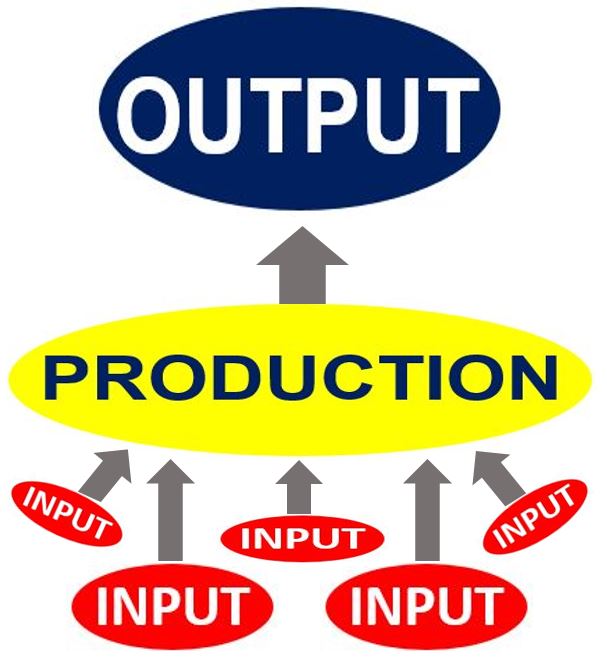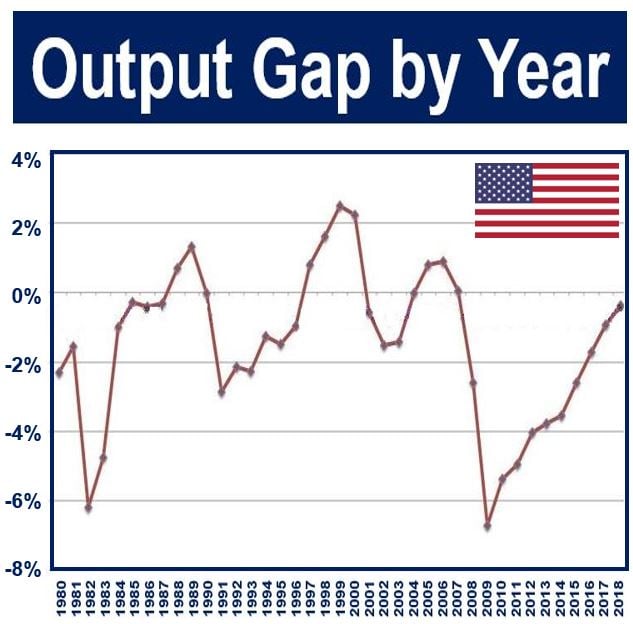Output refers to the total production of goods and services of a whole country over a given period – its gross domestic product. The term may refer to all the work, energy, goods, or services produced by an individual, company, factory or machine. In the world of computing, it refers to any data that has been processed by and sent out from a computer or similar electronic device. Anything we view on our computer monitor is output.
Several possible meanings
It may also refer to anywhere on an electronic device where power (or data) leaves a system.
In web design – HTML – the <output> tag is used to represent the result of a calculation (like one performed by a script) or the result of a user’s action.
In contracting, the term means the desired result from a contractor or project. An output contract is an agreement in which all of a producer’s production is sold to the buyer – both the producer and the buyer commit to selling and purchasing (respectively) the entire production.
Until 1830, the term in the English language referred to the iron and coal trades only. As a verb, it began to take on the meaning of ‘to produce’ in 1858.
 Input refers to the raw materials, components and people you need in order to produce a finished product. For example, to make a ship you need various metals, plastics, wood, cables, glass, electronic components, ship-workers, welders, etc. Production is the making process – it is where the raw materials and components are transformed into a product. Output is the result of production – it usually refers to how much is produced.
Input refers to the raw materials, components and people you need in order to produce a finished product. For example, to make a ship you need various metals, plastics, wood, cables, glass, electronic components, ship-workers, welders, etc. Production is the making process – it is where the raw materials and components are transformed into a product. Output is the result of production – it usually refers to how much is produced.
Output in Economics
In economics, output is the total quantity of goods and services that an individual, company, industry, city, region or country, or even the whole world produces in a given period. In the field of **macroeconomics, the concept of national output is essential.
** Macroeconomics is a branch of economics that looks at large-scale economic factors, such as national production, inflation, unemployment or interest rates – things that affect or exist across the whole economy.
 According to Viable Opposition’s website, the latest US output gap started in 2008 – it has been the longest and deepest period of negative gap since 1980. The negative gap peaked in 2009, the weakest level in nearly three decades. Economists predict that the gap won’t hit zero until at least 2018.
According to Viable Opposition’s website, the latest US output gap started in 2008 – it has been the longest and deepest period of negative gap since 1980. The negative gap peaked in 2009, the weakest level in nearly three decades. Economists predict that the gap won’t hit zero until at least 2018.
What makes a country rich is not how much money it has, but how much it produces.
GDP and output
Calculating gross domestic product (GDP) is the most common measure of national output. Economists say that their main challenge when using the GDP method is to make sure that one product has not been counted two or more times.
A country’s GDP should be equal to the value of all the products and services a country produces. However, when you add up everything, you actually end up counting the same item several times, at various stages of production.
Example
For example, imagine a tailor who buys material for making a man’s suit for $50. He then cuts and stitches the material and puts his final touches on the suit. He then sells the suit for $150 – his costs for turning the cloth into a suit were $100.
We can then say that he added $100’s worth of output to the suit, as opposed to saying that he produced $150’s worth of a good. Value addition is the product’s sale price, minus all the non-labor costs to create the final product.
Economists can also avoid the double-counting issue by focusing only on final sales, where all prior-stages of production are accounted for.
Both methods are accurate, economists say. The second method, known as the expenditure method, is more commonly used when calculating most countries’ GDP.
Overcounting risk
There is a high risk in overcounting as far as imports are concerned. If a US company bought a product manufactured in Vietnam, this expenditure must not be counted in the consumer expenditures of US GDP, because the output being bought is foreign. That is why imports are not included in GDP calculations.
Taking all these factors into account, we see that:
GDP = C+I+G+X-M
C=Consumer spending. I=Investment (Gross fixed Capital Formation). G=Government Spending. X=Exports. M=Imports.
Output vs. outcome
While outputs are the total quantities produced, outcomes are the benefits your customers receive from purchasing your goods or using your services. In an article in the Harvard Business Review,
Deborah Mills-Scofield writes:
“Outputs are important products, services, profits, and revenues: the What. Outcomes create meanings, relationships, and differences: the Why. Outputs, such as revenue and profit, enable us to fund outcomes; but without outcomes, there is no need for outputs.”
Other ‘output’ related terms
Output Gap (a.k.a. Okun Gap)
This is the difference between a country’s current GDP and what that GDP could be if production was at full capacity – its potential GDP. If a country’s current GDP is $100bn, but its potential GDP – if production were at full capacity – is $110bn, the gap is $10bn or (minus) -10%. If a country’s gap is a positive number, such as +4%, it means that it is producing at higher than its estimated potential.
Understanding the nuances of an output gap helps policymakers adjust fiscal and monetary policies to better steer the economy towards growth.
Example sentence: “The country’s unexpected economic boom resulted in an output gap turning positive, indicating production levels had surpassed potential GDP.”
Industrial Output Index
This is an index that tells us what the level of activity is in the production of raw materials that are used in manufacturing, as well as in manufacturing itself. It is an economic indicator that the Federal Reserve Board of the United States publishes.
Example sentence: “Analysts eagerly awaited the release of the Industrial Output Index to gauge the health of the manufacturing sector.”
 Eugène Henri Paul Gauguin (1848-1903) was a French post-Impressionist painter who was underappreciated until after he died. Today, he is recognized for his experimental use of color, and his synthetist style, which was quite different from impressionism. Modern artists, including Henri Matisse and Pablo Picasso, were strongly influenced by Gauguin. (Image: Photo taken c.1891 – Wikipedia)
Eugène Henri Paul Gauguin (1848-1903) was a French post-Impressionist painter who was underappreciated until after he died. Today, he is recognized for his experimental use of color, and his synthetist style, which was quite different from impressionism. Modern artists, including Henri Matisse and Pablo Picasso, were strongly influenced by Gauguin. (Image: Photo taken c.1891 – Wikipedia)
Industrial Output/Production
The entire output of all facilities that produce goods in a country.
Example sentence: “The annual report showed a significant increase in industrial output/production, signaling a strong year for the economy.”
Manufacturing Output
This is a subset of the one above – it includes the output of all factories across the whole country.
Example sentence: “The rise in consumer demand was reflected in the surge of manufacturing output this quarter.”
Output Tax
A tax that a vendor adds to the buyer’s invoice or bill when selling a taxable good or service.
Example sentence: “The new policy implemented an output tax on luxury goods, which directly affected the retail pricing.”
Net Output
This is the difference between cost and price – the price something was sold for minus the cost of producing it. It is also an accounting concept used in the national accounts of the NIPA (National Income and Product Accounts) and the USNA (United Nations System of National Accounts), as well as in some corporate or government accounts.
Video – What is Output?
This video presentation, from our sister channel on YouTube – Marketing Business Network, explains what the meaning of ‘Output’ is using simple and easy-to-understand language and examples.
